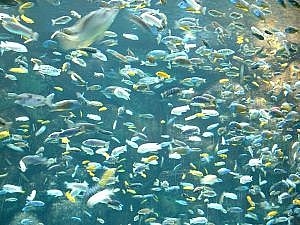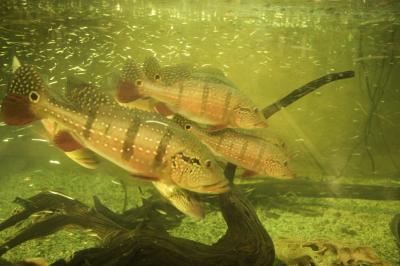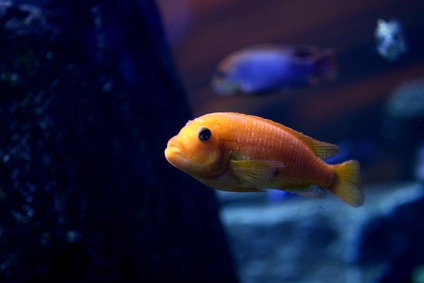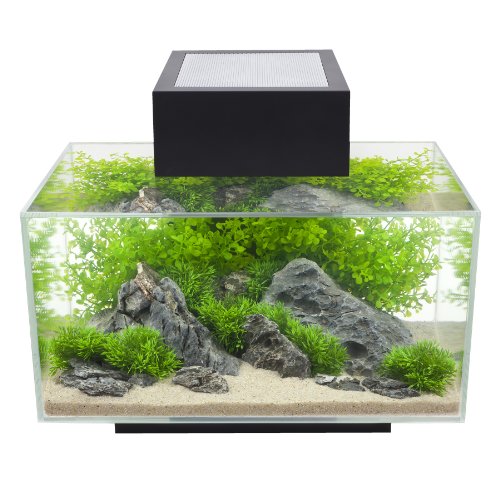

Wash the aquarium, the filter and the filter media, the decorations, the gravel, and other equipment that you will be using. Do not use detergent in cleaning the equipment. Set up the aquarium and fill it with dechlorinated water (more on this later). Turn on the filter to start the cycling. Monitor the ammonia and the nitrite levels using your testing kits. Once cycling is completed, you’re ready to bring your new pet home.

When you buy a fish, the staff will put the little fellow inside an oxygenated plastic bag. If you have a lighting fixture on your aquarium, turn the lights off as not to alarm the fish. Then, put the plastic bag into your aquarium and leave it floating for about half an hour. Why? This is to acclimate the temperature between the tank water and the water inside the plastic bag. You cannot take a fish from a 28°C water and transfer it to a 20°C water. Doing so will result in temperature shock to the fish. The same rule applies to water changing. You cannot add very cold water into the warm tank water (and vice versa). The temperatures should be as equal as possible. Going back to the new fish in the plastic bag, after half an hour or so, open the bag and slowly add the tank water into the plastic bag. This will allow the fish to gradually adapt its body to the water conditions outside the plastic bag. Leave it there for another half an hour. Be careful not to spill the water from the plastic bag into the aquarium. You wouldn’t want to contaminate your aquarium with the water from the store. After that, your fish is ready to get out of its plastic bag. Scoop your fish out of the plastic bag and release it into its new home. Turn on the aquarium lights after a few hours (or leave them off if it’s nighttime).
*Hardy fish, also called starter fish, are fish that are tough such as cichlids, catfish, gouramis and tetras. I encourage you to research first about the specific fish in your mind to make sure that it can be used as a starter fish. Do not use a goldfish to cycle your aquarium, unless you want a goldfish for your aquarium. They are not as tough. Goldfish require different kind of care. An aquarium that has been cycled using a goldfish may not be a suitable home for your tropical fish.

For not-yet-cycled aquariums, you can add a couple of fish at a time. Wait for 3 to 6 weeks before adding new fish. Adding too many fish at once will produce more wastes, thus, stressing the beneficial bacteria that are yet to be established.
To know how many fish you can put into your aquarium, first, you have to find out how many gallons your aquarium can carry. Multiply your aquarium’s length, width, and height and divide the product by 231. You can have 1 inch fish for every gallon (e.g. around 20 one-inch fish for 20-gallon tank). However, remember that this is only an estimation. Round-bodied fish produce more wastes than their thin-bodied counterparts. You have to keep an eye on your fish. Monitor your aquarium’s nitrite and ammonia levels regularly. Moreover, find out the adult size of the fish you’re getting. You wouldn’t want to stock your 20-gallon tank with 5 three-inch baby parrotfish only to find out that each could grow up to 10 inches long. © Rainy Kua 2014. All Rights Reserved. How to Feed an Oscar Fish
How to Feed an Oscar Fish
How to Feed
How to Feed an Oscar Fish
How to Feed an Oscar Fish
How to Feed
 How to Kill Ich in a Fresh Water Fish Tank
How to Kill Ich in a Fresh Water Fish Tank
How to Kill Ich in a Fresh Water Fish Tank
How to Kill Ich in a Fresh Water Fish Tank
 How to Take Care of a Baby Parrot Fish
How to Take Care of a Baby Parrot Fish
How to Take Care of a Baby Parrot Fish
How to Take Care of a Baby Parrot Fish
 Turtles As Pets
You may not realize just how
Turtles As Pets
You may not realize just how
 Setting Up a Saltwater Aquarium
A saltwater aquarium is a lo
Setting Up a Saltwater Aquarium
A saltwater aquarium is a lo
Copyright © 2005-2016 Pet Information All Rights Reserved
Contact us: www162date@outlook.com